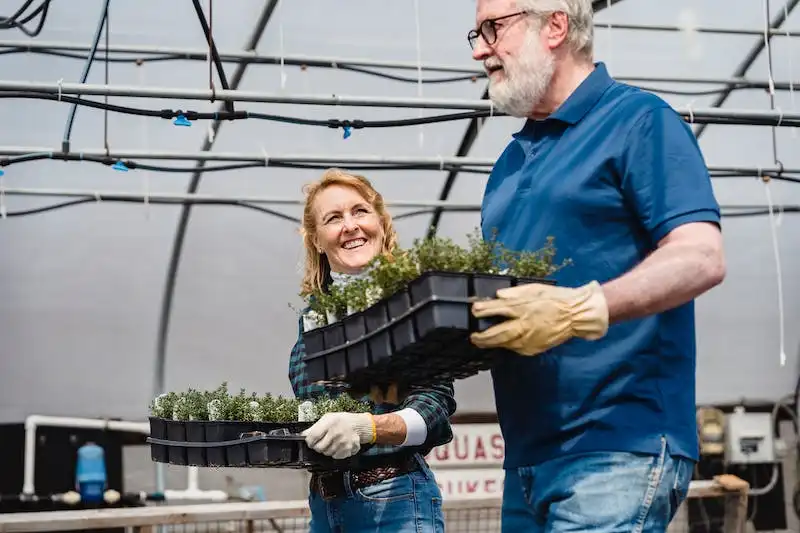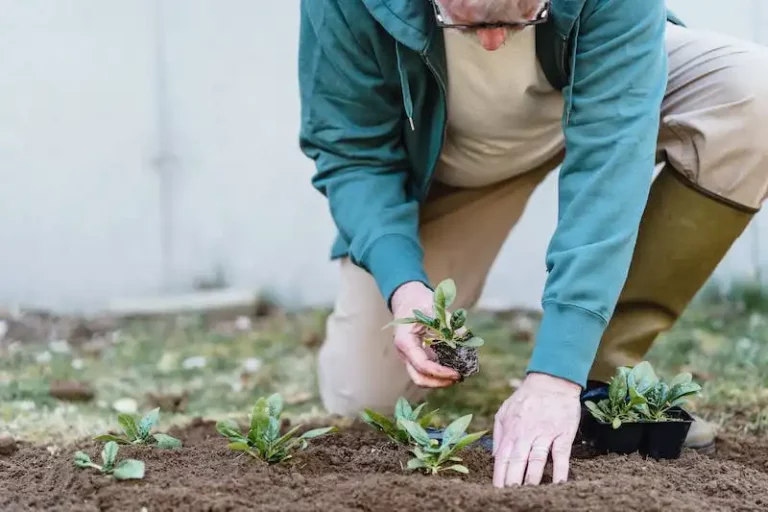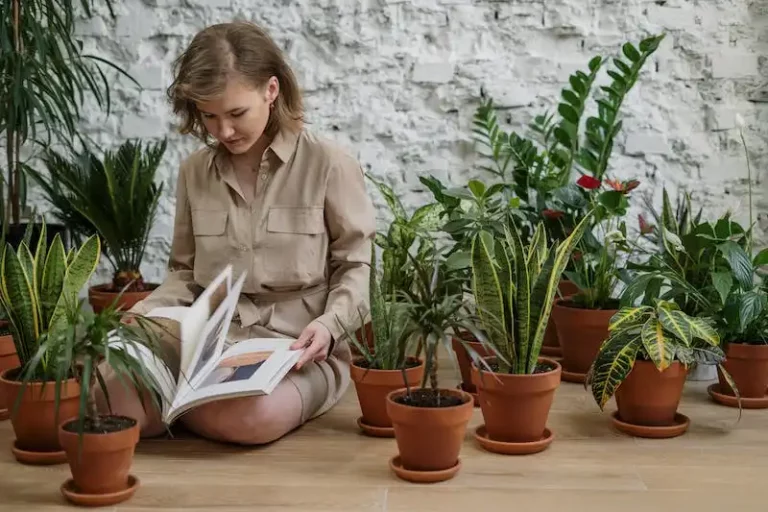The MSU Extension provides valuable information and resources for gardeners and farmers alike. Their expertise spans a wide variety of topics, including the care and cultivation of cabbage plants. Cabbage is a versatile and nutritious vegetable that can be grown from seedling to mature head.
Cabbages are a member of the brassica family and are known for their many varieties and characteristics. From the crinkly leaves of Savoy cabbage to the smooth, round heads of cauliflower, there’s a cabbage variety for every taste and cooking preference. Whether you’re looking to make coleslaw, kimchi, or simply enjoy a side of steamed cabbage, the MSU Extension has recommendations and tips to ensure your cabbage crop is a success.
When growing cabbage, it’s important to provide the plants with the right conditions. Cabbage prefers full sunlight, but can tolerate some shade. The soil should be well-drained and moist, as too much moisture can lead to disease and rot. Irrigation can be applied to keep the soil moist, but be cautious not to overwater.
Cabbage is susceptible to pests such as caterpillars and aphids. These pests can cause damage to the leaves and stems of the plants. To control these pests, the MSU Extension recommends applying insecticides or using organic methods, such as introducing beneficial insects or handpicking caterpillars. Regular monitoring and a proactive approach to pest management is key.
Harvesting cabbage is a rewarding experience. When the heads are firm and feel solid, it’s time to harvest. Use a sharp knife to cut the cabbage at the base, leaving several outer leaves intact. This will ensure the cabbage retains its shape and stays fresh for longer. Once harvested, cabbage can be stored in a cool and dry place for several weeks.
The MSU Extension is a valuable source of information for all things related to cabbage. Their guides and resources provide in-depth knowledge on topics ranging from seed selection and planting depth to cooking techniques and storage solutions. Whether you’re a seasoned gardener or a beginner, the MSU Extension invites you to explore their resources and learn more about the wonderful world of cabbage.
How to grow cabbages
Growing cabbages in your garden can be a rewarding and delicious experience. Cabbages are versatile vegetables that can be used in a variety of dishes, such as salads, kimchi, and stir-fries. By following a few simple steps, you can successfully grow your own healthy and green cabbages.
- Choose the right location: Cabbages thrive in full sun and prefer well-drained soil. Find an area in your garden that receives at least 6 hours of sunlight per day and has loose, fertile soil.
- Prepare the soil: Before planting, remove any debris or weeds from the area. Dig the soil to a depth of about 12 inches and add organic matter, like compost or well-rotted manure, to improve its fertility and drainage.
- Start seeds indoors: Cabbages can be started from seeds indoors from September to April. Plant the seeds in seedling trays or small pots filled with seed-starting mix. Keep the soil moist and place the trays or pots under a grow light for 12-14 hours a day.
- Transplant the seedlings: Once the seedlings have grown several sets of true leaves and the threat of frost has passed, transplant them outdoors. Choose a day when the soil is moist and there are no strong winds. Dig holes that are as deep as the seedling’s root ball and space them about 18 inches apart in rows.
- Provide irrigation: Cabbages need consistent moisture to grow well. Water them deeply once or twice a week, providing about 1 inch of water each time. Irrigation is particularly important during dry periods.
- Protect from pests: Cabbage plants can be vulnerable to pests like caterpillars. To prevent infestations, cover your plants with a floating row cover or use organic pest control solutions. Inspect your plants regularly and remove any caterpillars or eggs that you find.
- Harvesting: Cabbage heads will be ready for harvest about 70-90 days after planting. They are ready when they feel firm and the outer leaves have turned dark green or purple. Use a sharp knife to cut the cabbage heads off at the base.
- Plant again in fall: Cabbages can be planted again in late summer or early fall for a second harvest. When planting for fall, it’s better to start with seedlings rather than seeds to ensure they have enough time to grow before the first frost.
How to grow cabbages from seed
If you want to try growing cabbages from seed, it’s not too difficult. Below, you will find a step-by-step guide on how to successfully grow cabbages from seed.
Planting:
Start by planting cabbage seeds indoors about 6-8 weeks before the last expected frost date in your area. Fill containers with moist, well-drained soil and sow the seeds about ¼ inch deep. Keep the soil consistently moist.
Care requirements:
Cabbages need full sun, so make sure to choose a sunny area in your garden. The soil should be fertile and rich in organic matter. To improve soil fertility, you can add well-rotted manure or compost. Cabbages also prefer slightly acidic soil with a pH of 6 to 6.5.
Growing:
After planting, the seedlings will sprout in about 7-10 days. Once they reach about 3 inches tall, thin them to allow 12-24 inches of space between each plant. This will give the cabbages enough room to grow their large, leafy heads.
Harvesting:
Cabbages are ready for harvesting when the heads are firm and feel solid when squeezed. To harvest, use a sharp knife to cut the cabbage heads just above the outer leaves. Harvest from the outer leaves first, and leave the smaller, inner leaves to continue growing for a later harvest.
Common problems:
Cabbages can attract pests, such as cabbage worms and root maggots. To prevent pest infestation, you can cover the plants with row covers or try companion planting with aromatic herbs like rosemary or thyme. Regularly inspect the plants for any signs of disease or damage.
Storage:
Store harvested cabbages in a cool, moist area such as a root cellar or the refrigerator. Cabbages can last for several weeks when stored properly.
In conclusion, growing cabbages from seed may seem daunting at first, but with the right care and attention, you can enjoy a bountiful harvest of this leafy and attractive vegetable. Just follow the steps outlined above and soon you’ll have delicious cabbages to enjoy in your home!
Source: MSU Extension
How to plant out cabbages
Planting out cabbages is an important step in the growing process. Here are some tips on how to do it:
Preparing the seedlings: Start by selecting healthy seedlings from a reputable source, such as a nursery or seed packet. Make sure they are well-grown and free from any pests or diseases. If you are storing seedlings for later use, keep them in a cool and moist place to prevent them from drying out.
Preparing the soil: Cabbages prefer well-drained soil that is rich in organic matter. Before planting, remove any weeds or debris from the area and work the soil to a depth of at least 12 inches. Add compost or aged manure to improve the soil’s fertility.
Planting the cabbages: Dig a hole that is slightly larger than the root ball of the seedling. Place the seedling into the hole, making sure that the base of the stem is at ground level. Firmly press the soil around the seedling to ensure good contact.
Spacing: Leave enough space between each cabbage plant to allow for air circulation and growth. The exact spacing will depend on the variety you are growing, so refer to the seed packet or extension recommendations for specific guidelines.
Care and maintenance: Cabbages require regular watering, especially during dry spells. Apply water at the base of the plants to keep the foliage dry and avoid overhead irrigation, as this can lead to disease. Also, be sure to rotate your cabbage crops each year to prevent the build-up of pests and diseases in the soil.
Harvesting: Cabbages are typically ready to harvest in about 70-90 days, depending on the variety. Harvest them when the heads feel firm and solid to the touch. To harvest, use a sharp knife to cut the cabbage heads just below the outer leafy layer.
Storing and cooking: If you have more cabbages than you can use right away, store them in a cool and moist place, such as a root cellar or refrigerator. Cabbages can be used in a variety of dishes, from salads and stir-fries to soups and stews. They can also be fermented to make products like sauerkraut, kimchi, or pickles.
Common problems: Cabbages can be prone to pests and diseases, such as aphids, cabbage loopers, and clubroot. To prevent these issues, practice good garden hygiene, including removing weeds and debris, and promptly addressing any pest or disease problems that arise.
By following these steps and taking good care of your cabbages, you can ensure a healthy and bountiful harvest year after year.




